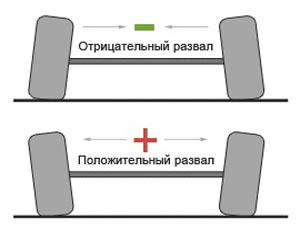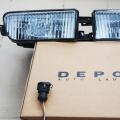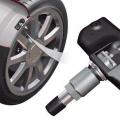Often the reason for the violation of the car's controllability is the incorrect adjustment of the wheel alignment angles, i.e. camber and toe are broken. Let's talk what is camber and toe and when to do it.
Toe-in
In front of the car (top view). Convergence is the difference between the distances A and B. If A is greater than B, then the convergence is considered positive. If A is less than B, the convergence is negative.Correct toe-in of the front wheels is an important factor in vehicle stability. Toe-in of the front wheels is determined by calculating the difference between the edges of the rims of the wheels in their rear and front positions, measured at the height of the center of the wheels between the same points of the rim. if the difference differs from the recommended one, the toe-in needs to be adjusted.
The exact adjustment of the toe-in is performed only at the service station, having previously checked the reliability of the fastening of the steering trapezoid lever to the pivot stand, the connection of the cones of the fingers of the ball joints of the steering rods, the fastening of the bipod and the pendulum arm and the camber. If you have repaired the chassis, it is necessary to adjust the camber-toe-in of the wheels.
Toe-in is adjusted by changing the length of the side steering rods. To do this, loosen the clamping clamps and turn the adjusting couplings by the same amount in opposite directions, changing the length of the side rods. At the end of the adjustment, the clamps are tightened so that their ends do not touch after tightening.
Camber
 Camber is the angle between the vertical and the plane of rotation of the vehicle wheel... If the top of the wheel is tilted outward of the vehicle, then the camber angle is positive, and if inward it is negative. It is clearly seen in the picture (front view of the car).
Camber is the angle between the vertical and the plane of rotation of the vehicle wheel... If the top of the wheel is tilted outward of the vehicle, then the camber angle is positive, and if inward it is negative. It is clearly seen in the picture (front view of the car). To check the camber, it is necessary that the air pressure in the tires of the wheels is normal, the wheel disks are not bent, and the free play of the steering wheel must correspond to the norm. Before checking the camber, make sure that the hinges of the front suspension arms, the ball joints of the front suspension, and the shock absorber rods are in good condition.
Camber is regulated by changing the number of shims between the axis of the lower arm and the cross member or turning the eccentric on the A-pillar. There are also rear camber plates for domestic cars.
Camber and wheel alignment. When to do it?
- After replacing suspension parts (shock absorbers, tie rods, etc.).
- If the tires wear unevenly on the inside or outside.
- If you got into a pit, they ran over the curb after an accident.
- Drive often on bad roads, the handling of the car is not satisfied.
- The steering wheel began to spin tightly, you can feel the "pull" to the side when driving in a straight line.
 In general, wheel alignment can be accurately checked and adjusted only on the bench. Do not believe (!) Those people who say that they can "by eye" adjust the installation angles. The fact is that even a difference of 0.5 degrees brings significant difficulties when driving.
In general, wheel alignment can be accurately checked and adjusted only on the bench. Do not believe (!) Those people who say that they can "by eye" adjust the installation angles. The fact is that even a difference of 0.5 degrees brings significant difficulties when driving. On modern cars, wheel alignment is not required. The design of the suspension is such that it excludes changes in the wheel alignment angles during a certain period of operation. It is necessary to do wheel alignment after suspension repair or after an accident.




